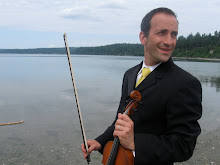Dear Families,
I hope many adults are able to attend tonight (Wednesday's) lecture on Simplicty Parenting by Kim Payne. In his talk he often exhorts parents to remove clutter from their child's physical environment and schedule. As I think about cleaning and clarifying, I am reminded of an article by Linda Thomas on chaos and cleaning and caring. As head house mother of the Goetheanum in Switzerland, in charge of keeping a center of spiritual and altruistic thought tidy, Thomas developed great insights into the spiritual aspects of, say, cleaning a toilet. She is an inspiring speaker, and her article alone has helped parents find new rewards in what were formerly odious tasks. Rather than becoming a distraction from parenting or personal growth, cleaning can become an aspect of our personal growth through parenting (much the argument of Whole Child/Whole Parent, an excellent book available in the Kathrine Dickerson Memorial Library).
As we remove clutter from our children's lives, we want to be careful to preserve the right for our children to encounter and overcome and learn from obstacles. Last week I showed the rest of the faculty video footage of infants and toddlers interacting at Loczy in Budapest. The faculty showed interest in what I narrated and what they observed. A colleague asked what I thought about the apparent clutter in the play room the infants at Loczy shared. I remarked that the Pikler and Gerber work reminds us to refrain from cleaning everything up right away to make things easy for the infants and toddlers. Infants and toddlers learn something as they try to crawl or walk or climb through and around all the toys on the playroom floor, and the nurses (and RIE teachers in America) are careful to refrain from clearing everything out of the way to make things easy. When left to develop with loving attention and trust, infants and toddlers will amaze us with what they are able to accomplish.
Joan Almon, Waldorf teacher of early childhood teachers and head of the Alliance for Childhood, writes with eloquence of the fluid play scenarios of the 3 to 5 year old. A 4 year old may have toys scattered about the house and have seemed to switch from playing boats to cats to dolls to tea party to dragons to construction to bus driving. When a parent suggests the child put away a toy from several scenarios ago, the child might object, "I'm still playing with that!" because, in the fluid, developing attention span of the 3 to 5 year old, the child is still playing with it. This Protean flow, rather than being a diversion from the development of attention span, is the way the 3 to 5 year old develops attention span. While we as parents and teachers help our children by bringing form to their surroundings, we also help then by becoming a bit comfortable with chaos, clutter, and challenge.
This reminds me of an interaction with a girl in the nursery class today. Many nursery children have become interested in washing dishes of late, and the more children there are, the more likely it is that someone will get wet. Rather than changing this girl's shirt right away, I offered her a couple of towels to dry herself with. She became very engaged with drying herself and then a classmate, and deep attention and cooperation were in the process of developing. Whereas at the beginning of the year becoming wet might have paralyzed her, now it gave her an opportunity to work and bond and imagine. We give gifts by what we as adults do and don't do. To paraphrase Kim Payne quoting something else, sometimes in a heated situation or crisis our presence is enough. The message to adults: Don't just do something, stand there!
With warmth and light,
William Dolde
Wednesday, February 11, 2009
Subscribe to:
Post Comments (Atom)

No comments:
Post a Comment